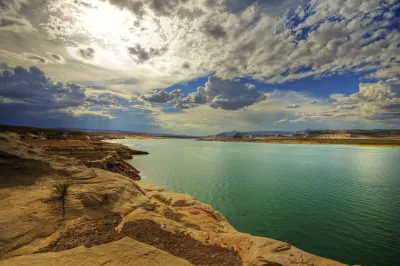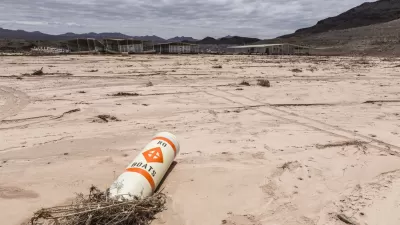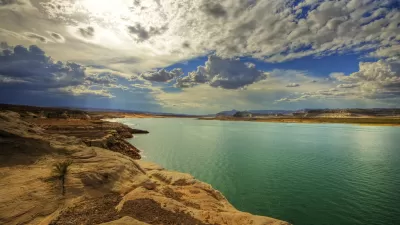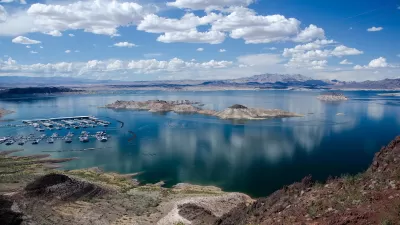Eric Balken makes the case that Lake Powell, anchored in place by the Glen Canyon Dam, is too inefficient a reservoir during times of water scarcity. Lake Mead, he says, is more than up to the task.

Water scarcity in the Colorado River Basin has prompted questions about Lake Powell, which loses up to 390,000 acre-feet of water yearly to seepage. "Nearly everyone agrees that conservation is needed basin-wide, but storing water in Lake Powell, the most wasteful reservoir in the system, isn't about saving water. Upper Basin officials fear that if Lake Powell shrinks too much, the reduced hydropower generation will drastically hike electric rates."
Glen Canyon Dam, completed in 1966, stops up the Colorado River and is the only reason Lake Powell exists. It is a key source of hydroelectric power, but it also enraged a generation of environmentalists by inundating an entire riverine ecosystem.
Balken advocates letting the waters of Lake Powell through the dam to collect in a single reservoir, Lake Mead. "This would mean Glen Canyon would transition from a reservoir destination to a world-class rafting and hiking destination. With low reservoir levels over the past decade, hundreds of miles of river and side canyons have already begun to be restored to their natural beauty." On the flip side, gas-fired plants may have to compensate for the dam's reduced generating capacity.
FULL STORY: It’s time to let Lake Powell go

Study: Maui’s Plan to Convert Vacation Rentals to Long-Term Housing Could Cause Nearly $1 Billion Economic Loss
The plan would reduce visitor accommodation by 25,% resulting in 1,900 jobs lost.

North Texas Transit Leaders Tout Benefits of TOD for Growing Region
At a summit focused on transit-oriented development, policymakers discussed how North Texas’ expanded light rail system can serve as a tool for economic growth.

Why Should We Subsidize Public Transportation?
Many public transit agencies face financial stress due to rising costs, declining fare revenue, and declining subsidies. Transit advocates must provide a strong business case for increasing public transit funding.

How to Make US Trains Faster
Changes to boarding platforms and a switch to electric trains could improve U.S. passenger rail service without the added cost of high-speed rail.

Columbia’s Revitalized ‘Loop’ Is a Hub for Local Entrepreneurs
A focus on small businesses is helping a commercial corridor in Columbia, Missouri thrive.

Invasive Insect Threatens Minnesota’s Ash Forests
The Emerald Ash Borer is a rapidly spreading invasive pest threatening Minnesota’s ash trees, and homeowners are encouraged to plant diverse replacement species, avoid moving ash firewood, and monitor for signs of infestation.
Urban Design for Planners 1: Software Tools
This six-course series explores essential urban design concepts using open source software and equips planners with the tools they need to participate fully in the urban design process.
Planning for Universal Design
Learn the tools for implementing Universal Design in planning regulations.
City of Santa Clarita
Ascent Environmental
Institute for Housing and Urban Development Studies (IHS)
City of Grandview
Harvard GSD Executive Education
Toledo-Lucas County Plan Commissions
Salt Lake City
NYU Wagner Graduate School of Public Service





























